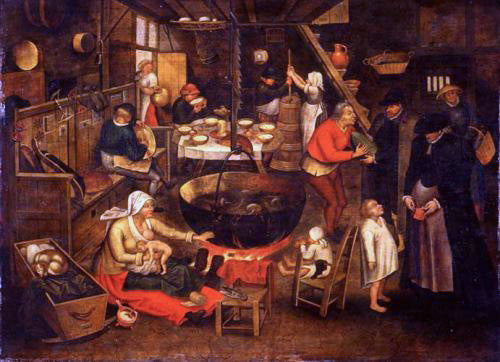Description
Pieter Brueghel the young man, heir to the rich tradition of flamenco painting and, in particular, in the style of his father, Pieter Brueghel el Viejo, offers in his work "carnival entertainments at the house of a farmer" a vivid portrait of life rural and popular festivities. Although his work has historically been belittled compared to that of his parent, Brueghel the young man knew how to capture the essence of the peasant celebrations, inserting in his works a deep sense of social observation and a remarkable attention to detail.
The composition of painting is dynamic and festive, appealing to the joy that characterizes the carnival festivals. In the center of painting You can see a group of peasants in a series of entertainment, where interaction and spontaneity become the engine of the scene. This representation of common people in their leisure moments is a distinctive seal of Brueghel, who amplifies the importance of popular culture in the context of a society in full development.
The colors used are warm and saturated, creating a vibrant atmosphere that suggests both the joy of carnival and the depth of peasant life. The terrible tones predominate, evoking the simplicity and authenticity of rural life, while the clothing of the characters are painted with great attention to the details, showing the variety of textures and a palette that varies between extinguished and more living tones, reflecting The diversity of characters that populate the work.
Among the characters, the viewer can see a series of figures that carry out different activities: some are dancing, others drinking and enjoying the company, while deep down a table full of groceryables and bottles is glimpsed. This deployment of social interaction not only highlights the festive character of the carnival, but it could also be interpreted as a celebration of the peasant community in its entirety, emphasizing the importance of interpersonal relations in their daily lives.
The work is registered within the context of the art of the 16th century, where the representation of everyday life and the themes of popular culture began to acquire prominence. Brueghel the young man, who was active during the period of the Nordic Renaissance, channeled this approach in his work, leaving a record of customs and traditions that resonated over time. Its precision in the details and its ability to capture the spirit of an era reveal a deep understanding of the social and cultural environment in which it lived.
Compared to similar works by his father, such as "the struggle between Carnival and Lent", "Carnival entertainments at a farmer's house" offers a more intimate and centered perspective focused on the peasant's experience instead of in an allegorical narrative. Brueghel the young man not only pays tribute to the holiday, but also takes the time to immortalize laughter, camaraderie and the daily life of rural life.
Through this work, the spectator is not only witnessing a celebration; It becomes part of a major story, one that seeks to understand the essence of the human being through its rituals and festivities. Thus, "carnival entertainments at a farmer's house" is a testimony of the vitality and richness of the popular culture of his time, as well as a reminder that, in the simple, he resides an emotional and social depth that lasts the long time.
KUADROS ©, a famous paint on your wall.
Hand-made oil painting reproductions, with the quality of professional artists and the distinctive seal of KUADROS ©.
Reproduction service paintings With a guarantee of satisfaction. If you are not completely satisfied with the replica of your painting, we refund your money 100%.

